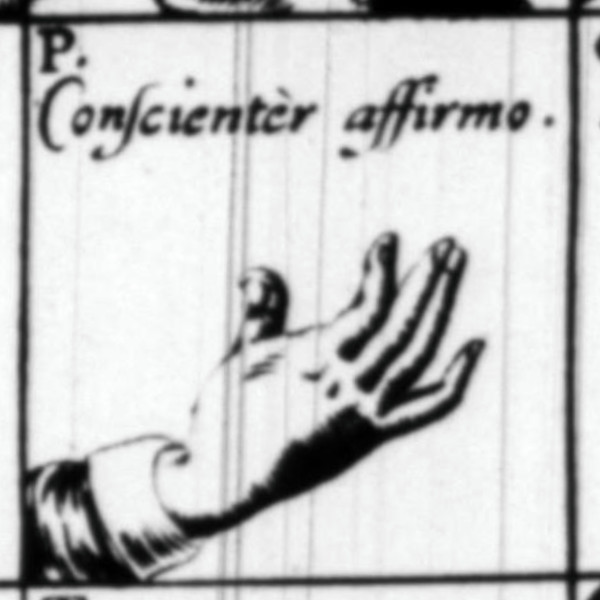Paper on a gesture that crops up in a lot of paintings (via)

If the paintings given are a representative sample, the “syndactyly” hypothesis seems unlikely - five right hands, two left hands.
The “secret society” theory is interesting - that kind of performative secrecy is the bread and butter of esotericism. The funny handshakes of the Masons are an example of this.
But there may be a much more mundane explanation than secret societies: five of the examples could be “Conscientér affirmo” (I consciously affirm) from John Bulwer’s Chirologia. In other words, the language of rhetorical gesture, which would fit with both the time period and the context:

To lay the hand open to our heart, using a kind of bowing gesture, is a garb wherein we affirm a thing, swear or call God to witness a truth, and so we seem as if we would openly exhibit unto sense, the testimony of our conscience, or take a tacit oath, putting in security that no mental reservation doth basely divorce our words and meaning, but all is truth that we now protest unto.
Heart. Bowing gesture. Truth.
Side note: that text just drifts into blackletter for a sentence or so. I've never seen that before. Did the typesetter sit at the wrong tray? Or am I missing something?
This expression has been most observed in the ancient Grecians, as Chrysippus saith, who from this natural expression of the hand, concludes the lodging of the soul to be about the heart.
So the position over the heart appears to be critical to the gesture. That covers four of the examples in the paper, maybe five.
I’ve done a bit more digging, and Tiziano: Problemi di iconografia by Erwin Panofsky specifically references Bulwer’s Conscientér affirmo when describing “Allegory of the Marquis del Vasto” by Titian. I can’t find an image of it, but I can find copies, and they all have the bowing gesture with the right hand. That’s six right, two left now.
